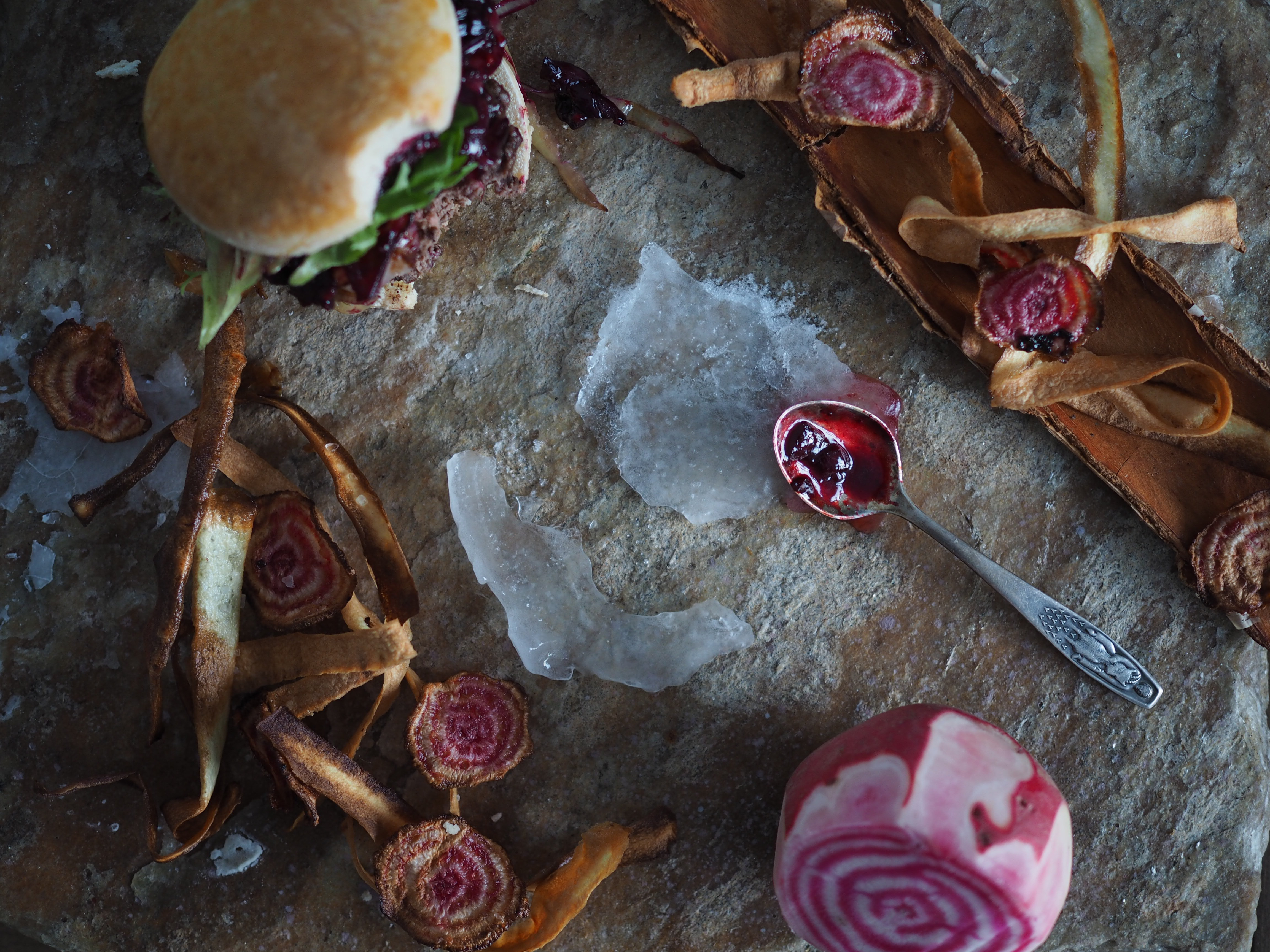
If freezer’s could speak, oh the stories they would tell. When you live in the country, especially in mountain country, you tend to rely very heavily on your preservation methods. And as I rummaged through our freezer full of plastic bags with pureed squash and frozen fruits, and last season’s lamb, fish and beef, I pulled out a couple of perfectly wrapped bundles with ELG scribbled on the outside. The brown butcher paper meticulously folded and sealed, made them look like little gifts. But then again, that’s what nature is. A gift.
Norwegian Elg, sometimes referred to as elk in English, is in actual fact moose, and is known fondly in Norway as the King of the Forest (Skogens Konge). And it’s no wonder, since moose have made their home in Norway for a long time and their very being is a symbol of the wild, and the majesty, and dignity of the landscape. Norwegians love their elg, and have a high respect for the animal, whether it be observing them in their natural habitat or hunting responsibly.
The moose is said to have been one of the first mammals to arrive in Norway after the ice age. When the great ice sheet covering Norway began to melt, moose were quick to take advantage of the areas which emerged. The first traces of moose were found in the eastern parts of Norway and show that they had come from Denmark and Southern Sweden. The oldest trace of moose in Norway were antlers found in a marsh at Fluberg, Oppland. The antlers are dated to be approximately 10,300 years old. (NTNU)
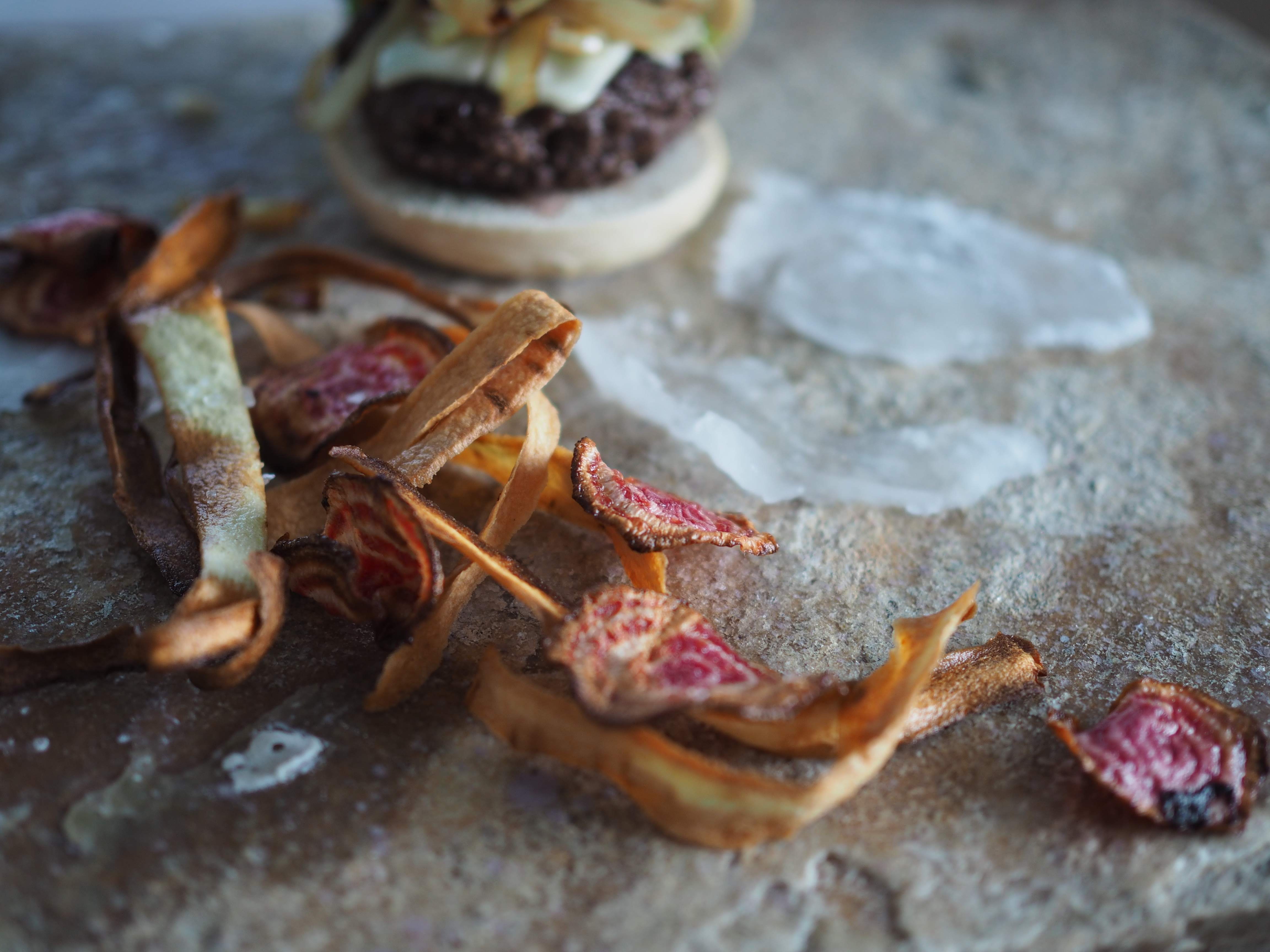
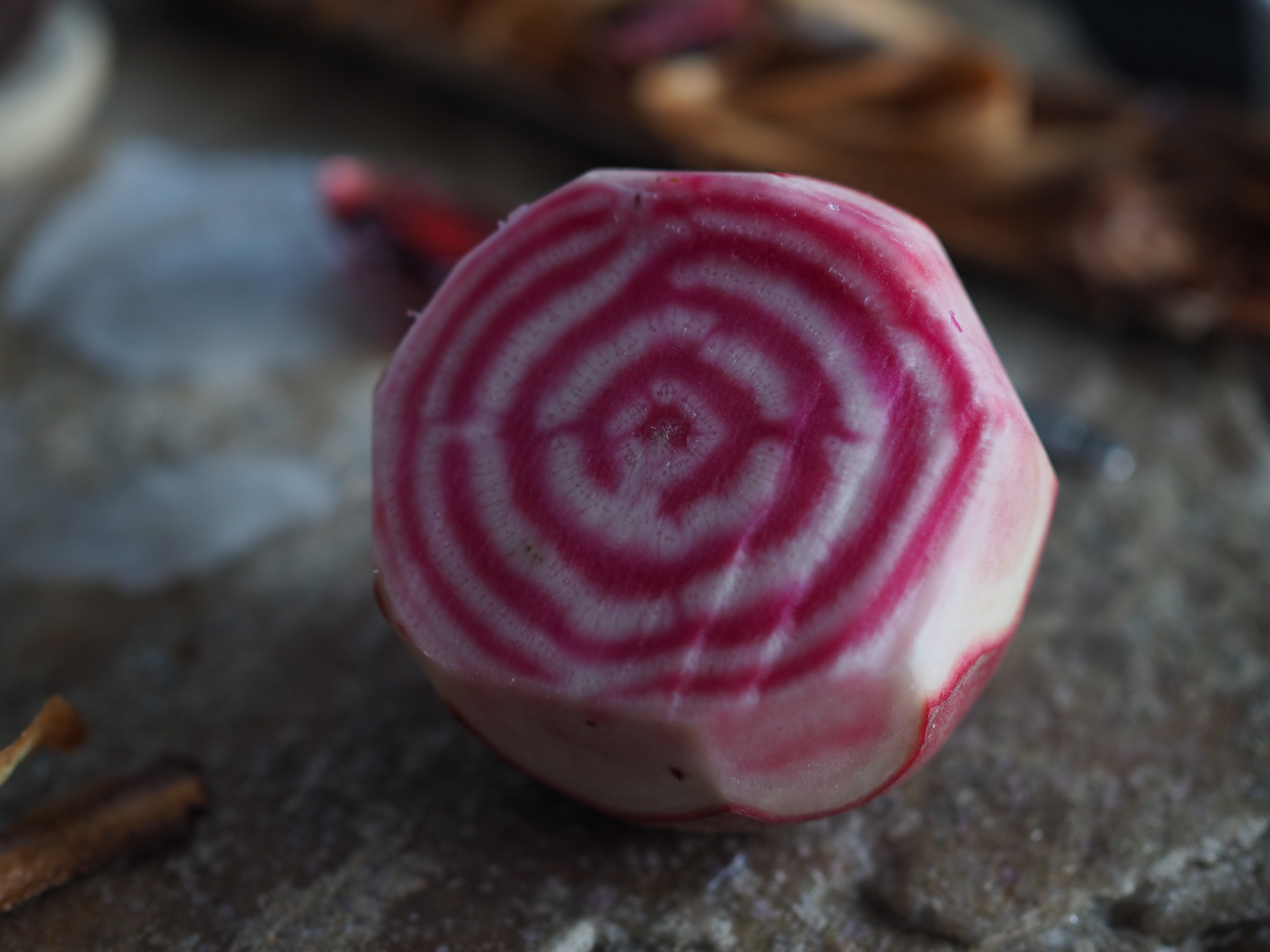
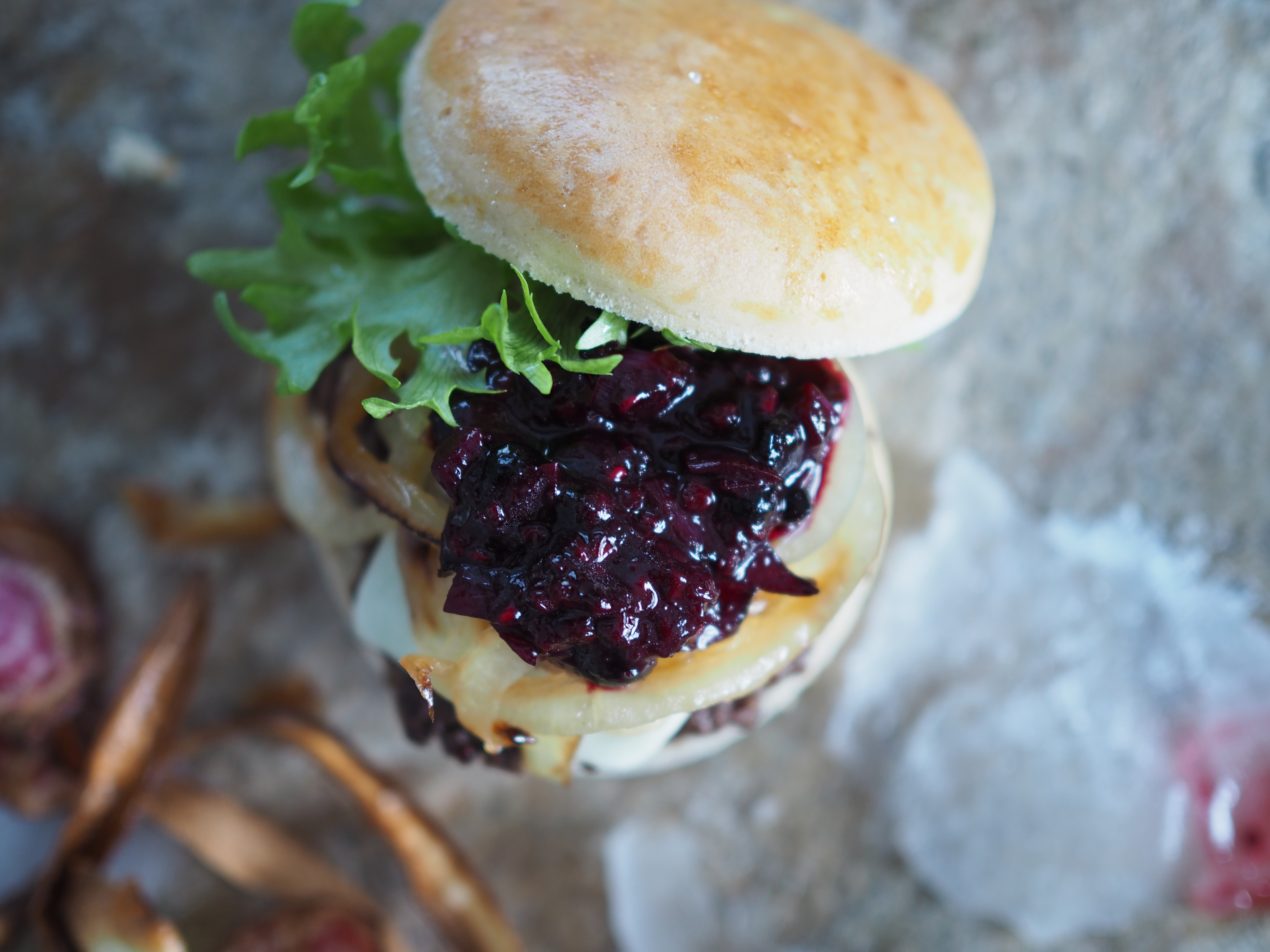
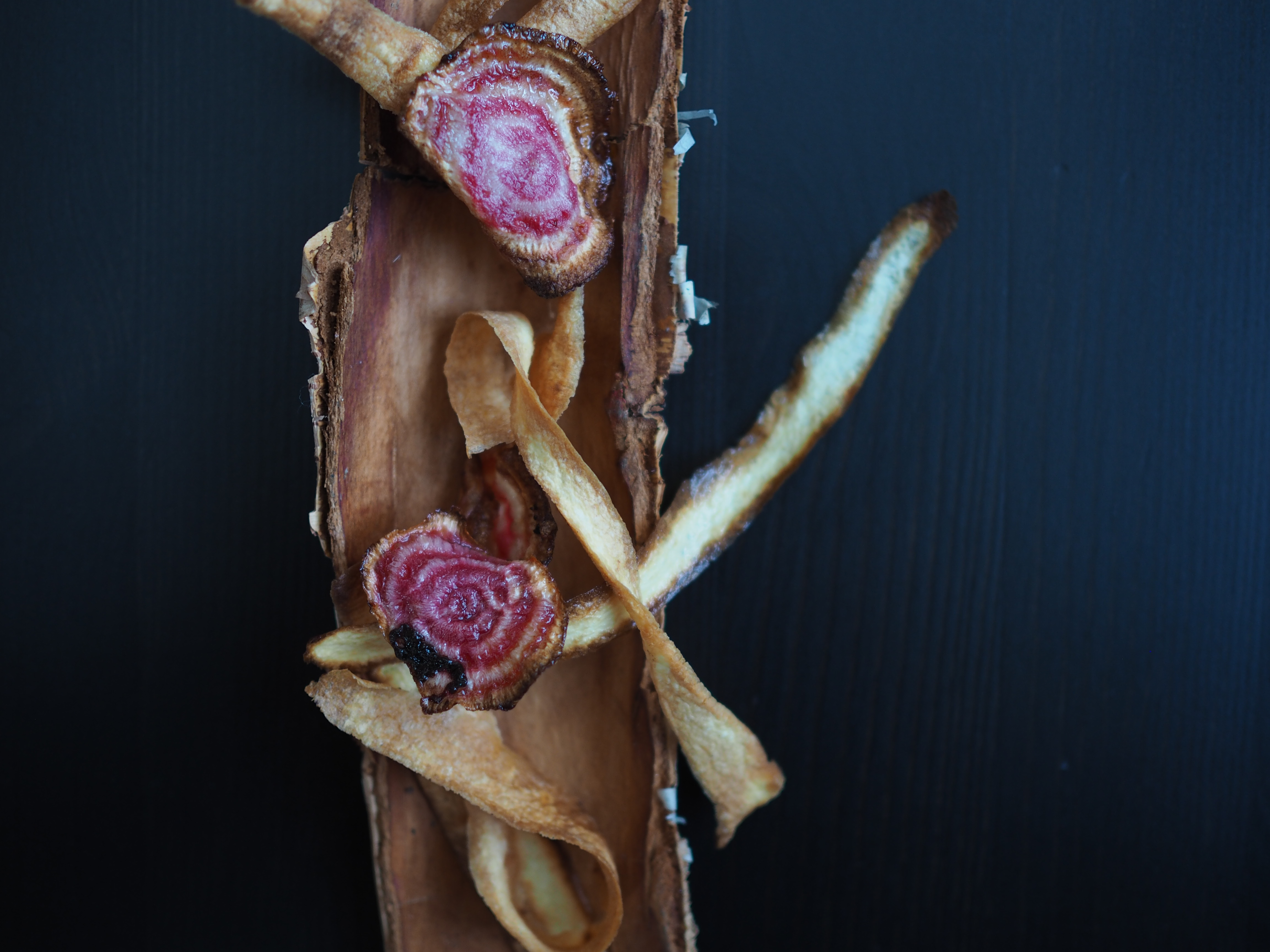
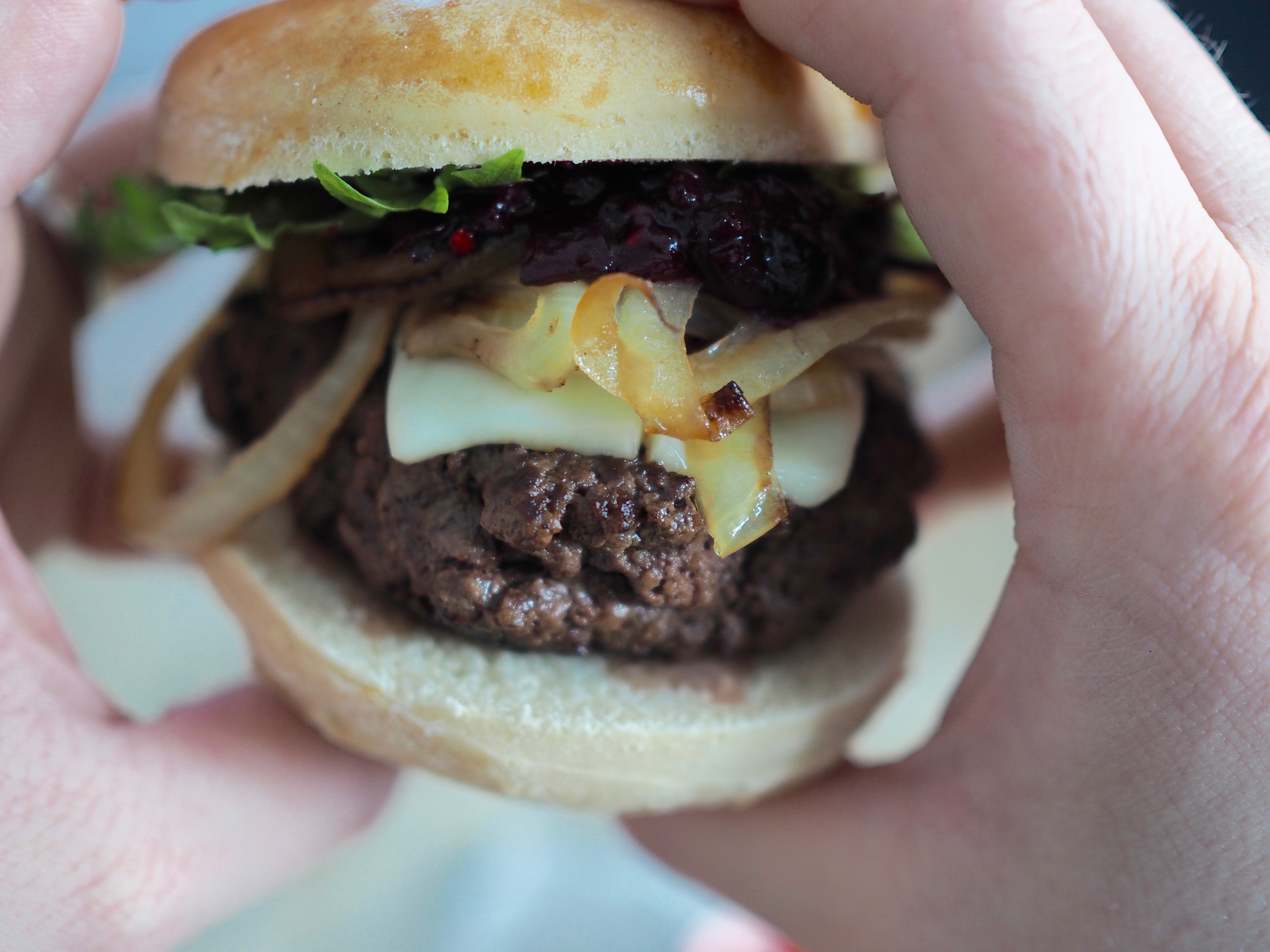
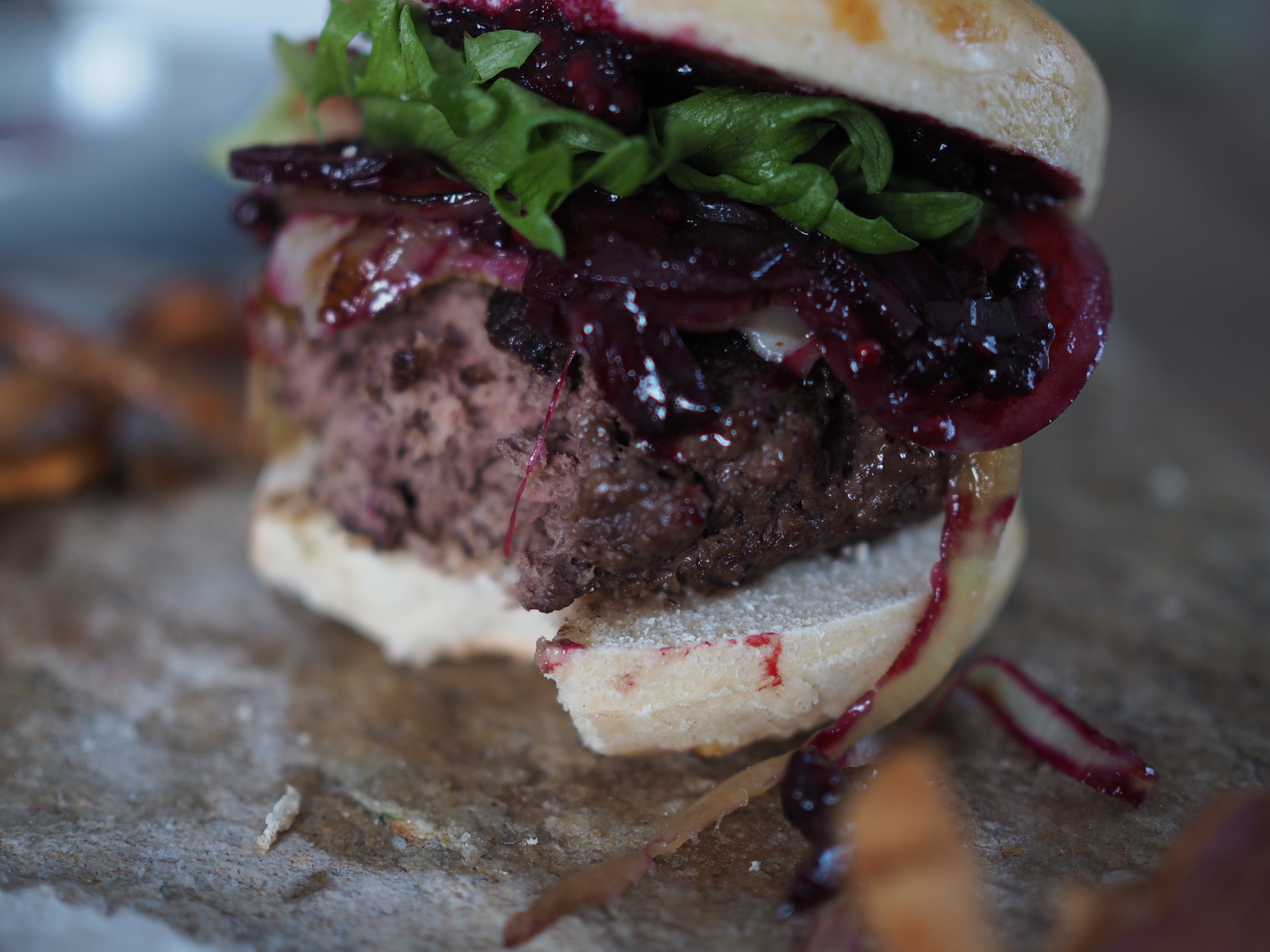
This burger is truly illustrative of a king and pays its respect to the forest. Top with a good slice of mild goat cheese, letting it melt into the burger, and carmelized onions, and you’ll feel like royalty. Elk/moose meat is extremely lean and flavorful and pairs perfectly with berries. I use a mix of forest berries for the relish, but feel free to mix and match with what you have. And if you don’t have access to moose or elk meat, you can substitute it with beef. Moose is extremely lean, therefore it is important to add en element of fat (I use olive oil mixed into the raw meat) and to not overcook it. If you do use a meat with a high percentage of fat, then you can omit the oil altogether. Root vegetable chips, on the side, take this burger to a whole new level!
Wild Moose Burger with Forest Berry Relish and Root Vegetable Chips (Elgburger med Skogsbærsaus)
(Makes 4 burgers)
Ingredients:
- 500 g ground moose or elk meat (beef can be substituted, just omit the olive oil)
- 2 Tb olive oil, plus more for cooking
- 2 tsp salt
- 1 large yellow onions, sliced in thin rings & olive oil for frying
- 1 Tb olive oil
- 100 g shallots, diced ( 2 large)
- 2 cups of mixed forest berries (blackberry, blueberry, raspberry, black and red currants – frozen or fresh)
- 2 Tb sugar
- 1 Tb lemon juice
- 1/4 tsp dried chili pepper flakes
- Goat cheese, mild
- 4 Burger buns
- 2 large parsnips, peeled into ribbons with potato peeler
- 2 large beetroots, peeled and sliced very thinly
- Vegetable or rapseed oil
- Sea salt
Heat some olive oil in a frying pan and add the onion. Slowly cook over medium heat, checking and stirring every 5 minutes or so, until they become darker in color and carmelized, about 30 minutes. When ready, set aside. And while the onion is cooking, start on the relish.
To prepare the relish, heat 1 Tb of olive oil in a small saucepan over medium-high heat. Add the shallots and sauté until soft and golden. Add the berries, sugar, lemon juice and chili flakes to the pan and stir. Turn down the heat and simmer on low for 10 minutes until thickened. Take off the heat and allow to cool.
Line a baking rack or large plate with 2 layers of paper towels. Fill a large saucepan with vegetable or rapseed oil (at least 2 inches deep) and heat until a deep-fry thermometer reaches 165 degrees celsius/ 330 degrees fahrenheit. Place the parsnip ribbons, a little at a time, in the oil and fry until golden, stirring with a wooden spoon occasionally, for about 1 minute. Lift out with a slotted metal spoon and place on the paper towels. Sprinkle a little sea salt on top. Repeat until all the parsnips are fried. You may need to add more oil to the pan occasionally, and wait until the temperature returns to 165/330 degrees. Next, fry the beetroot slices in the oil, turning as needed until the edges begin to curl, 3-4 minutes. Transfer to the paper towels and sprinkle with the sea salt. Continue to fry the remaining slices. Set aside. These can be stored in an air tight container for 3 days after they are cooled.
Prepare the burgers by combing the moose meat in a bowl with 2 Tb of olive oil. Form into 4 patties and press your thumb into the middle of each one to make a little indentation (this will allow for even cooking through the center). Season the patties with salt. Heat a large frying pan or skillet over high heat; add some oil. Place the patties in the skillet and cook on one side for 3-4 minutes. Cut the goat cheese into thin slices. Turn the patties over, press down lightly with a spatula (only once!), place the goat cheese on top and cover with a stainless steel bowl (or lid, but the bowl is better). Cook for another 3 minutes. *Rule of thumb: 3 minutes on each side for rare, 4 minutes for medium, and 5 minutes for well done. Moose is lean, you do not want to overcook it, so I recommend a total cooking time of 6-7 minutes.
Assemble the burger by cutting the buns in half, horizontally. You can toast them under a broiler for a couple of minutes, just spread a little butter on the cut sides before putting them in. Place a burger on each of the bun heels, add the carmelized onions and berry relish and some fresh lettuce leaves. Top with the bun crown. Serve hot with the beetroot & parsnip chips.
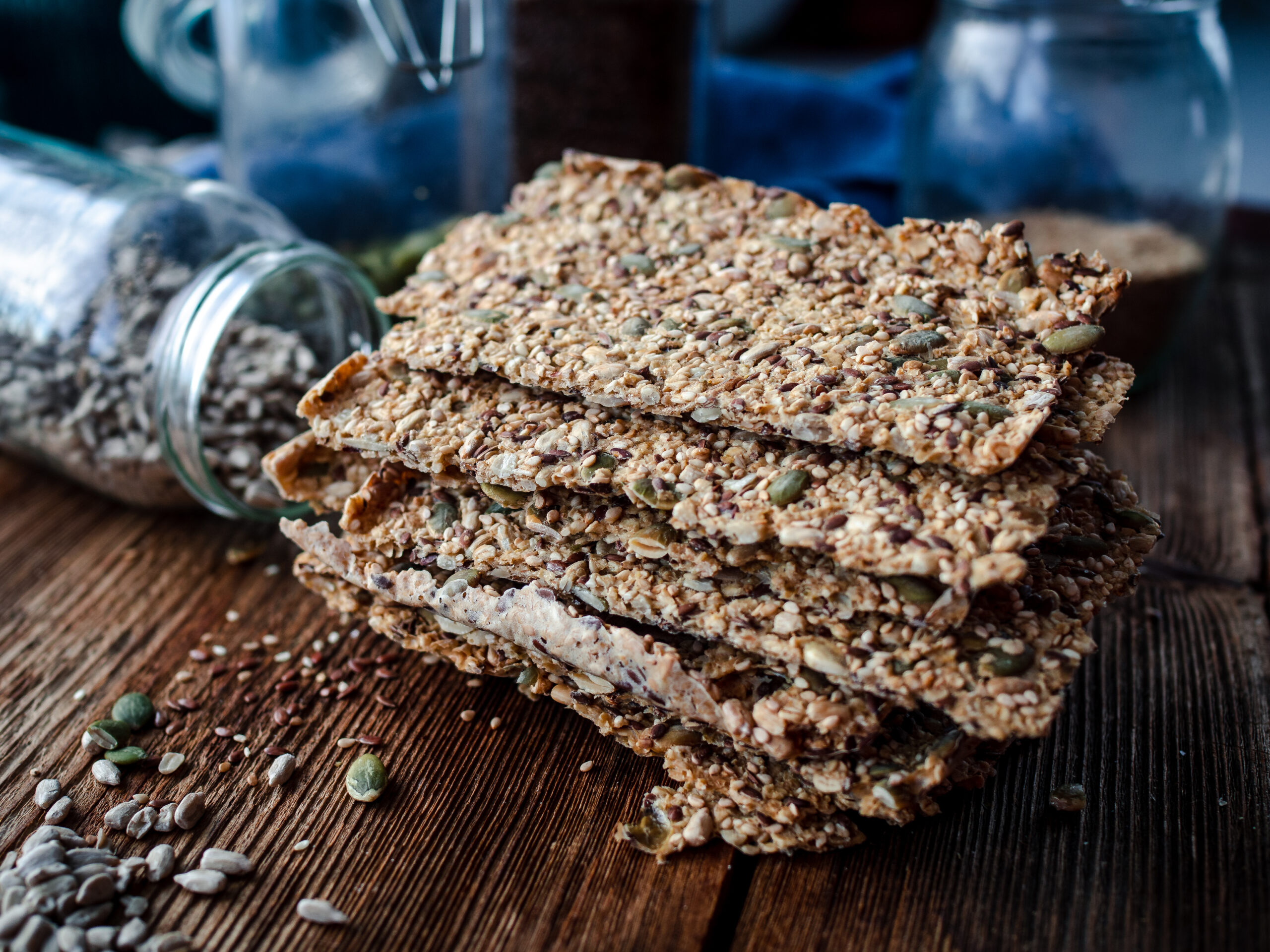
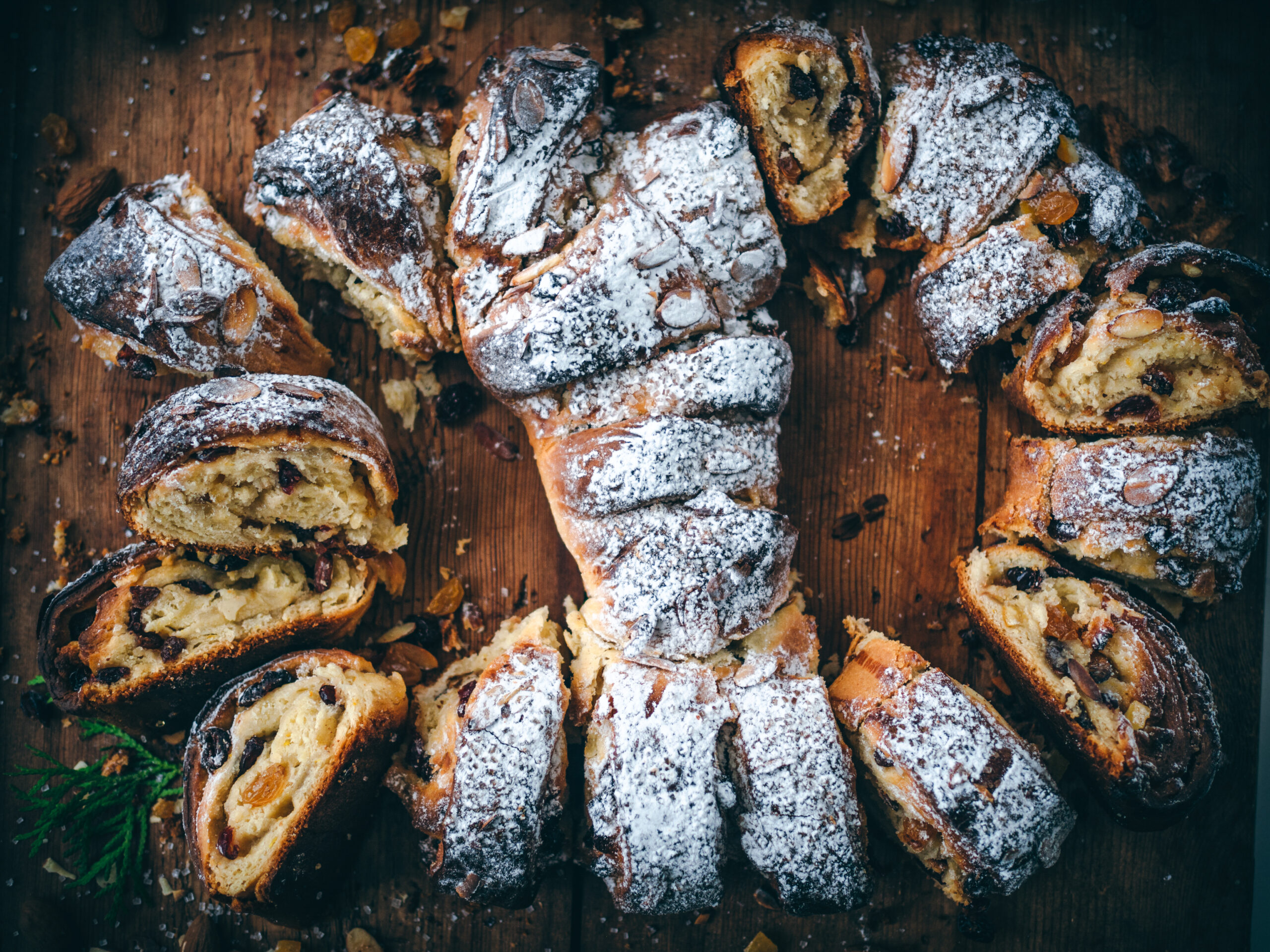
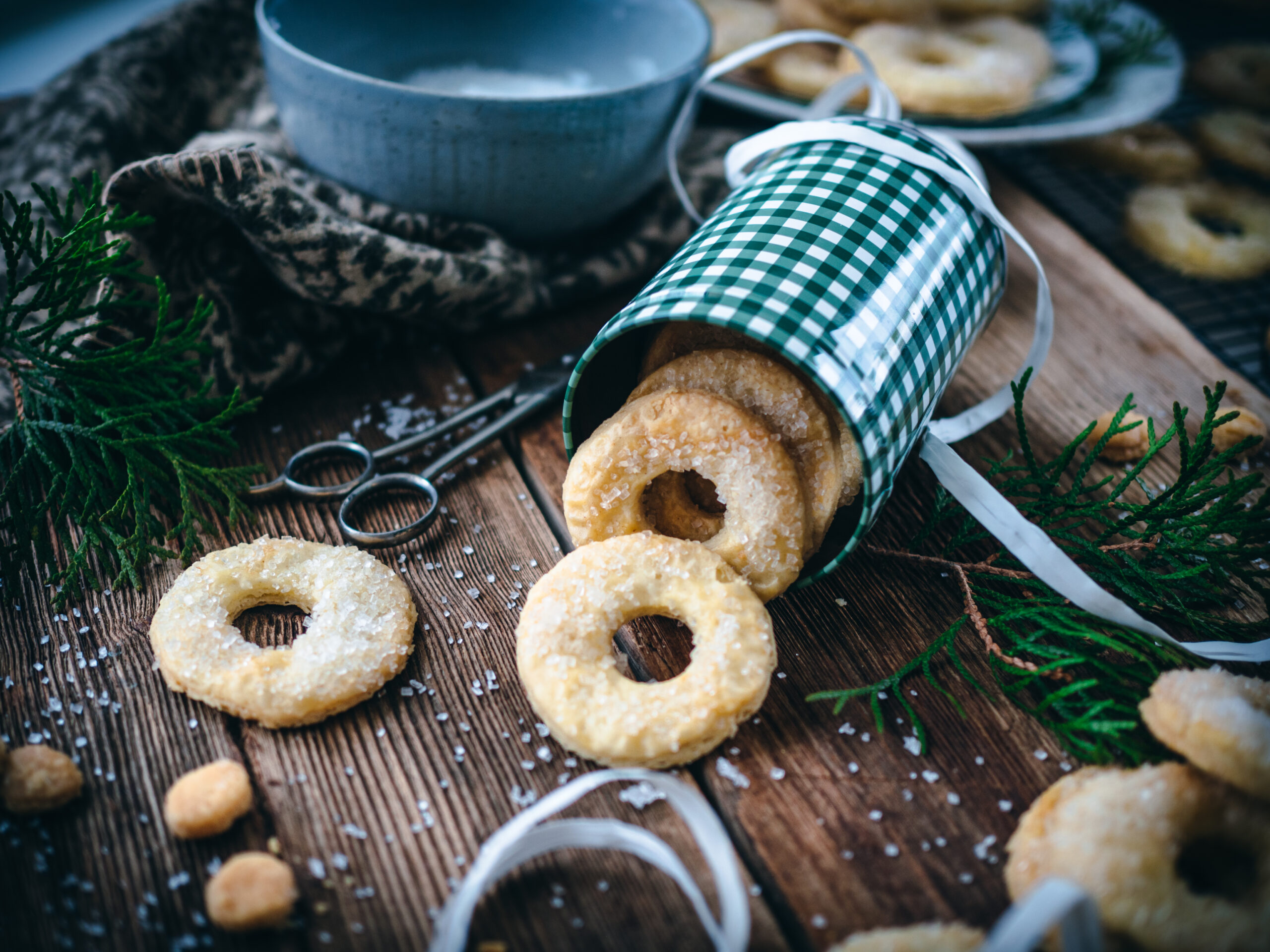
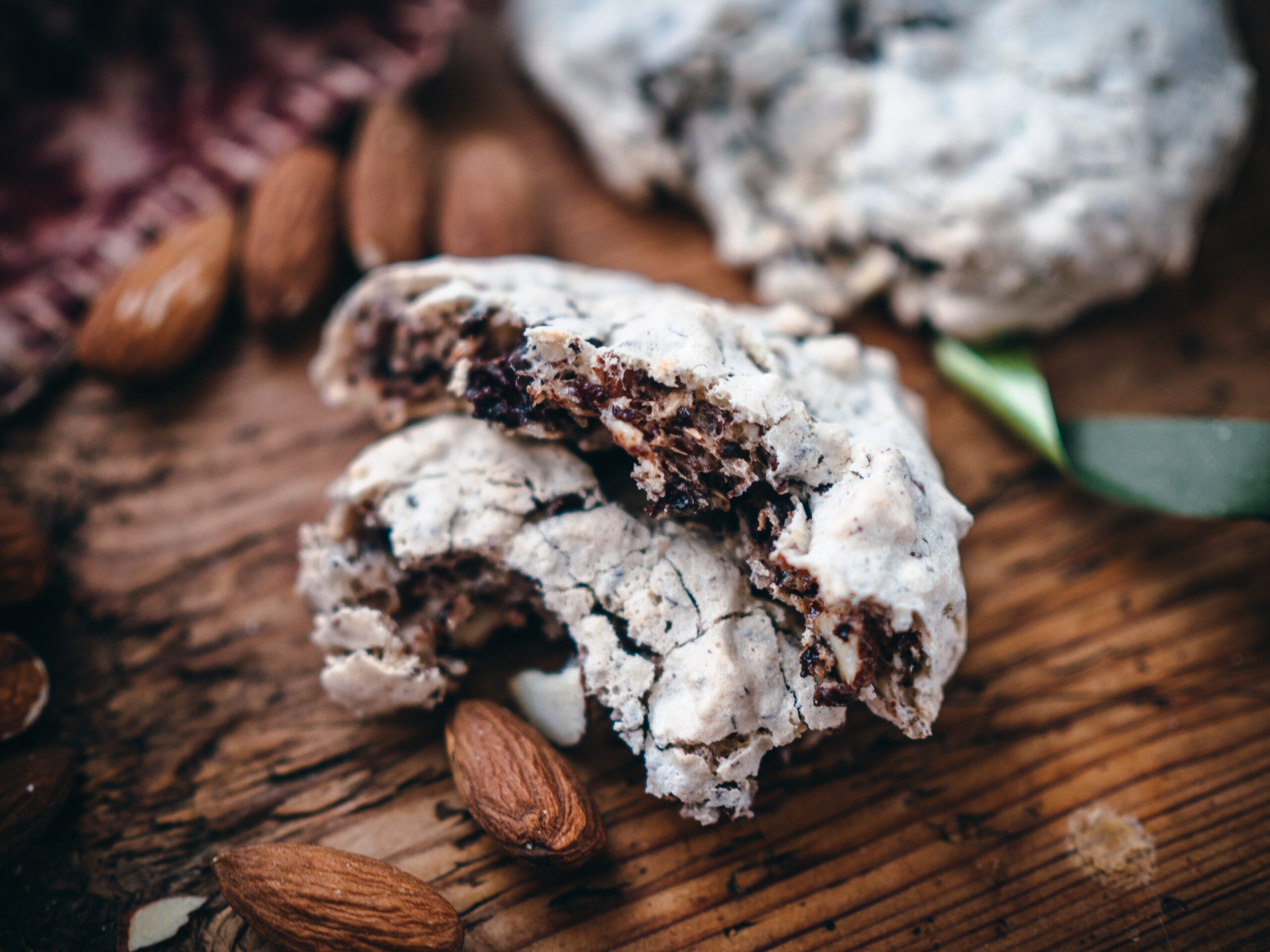

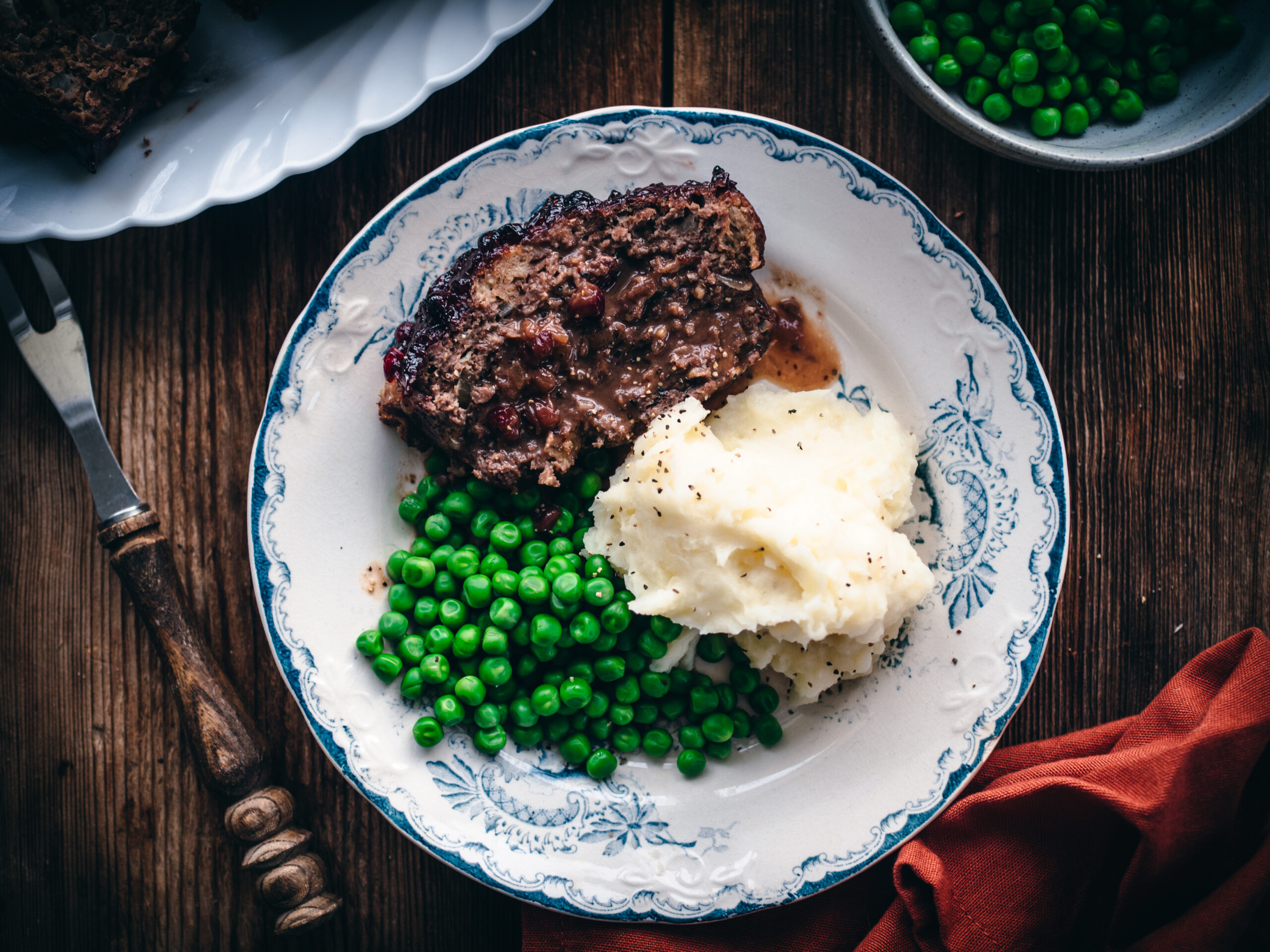
[…] For some elg/moose recipe inspiration, try my Wild Moose Burger with Forest Berry Relish […]